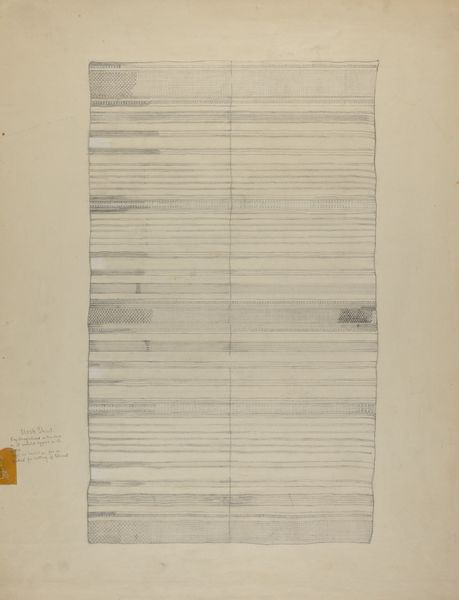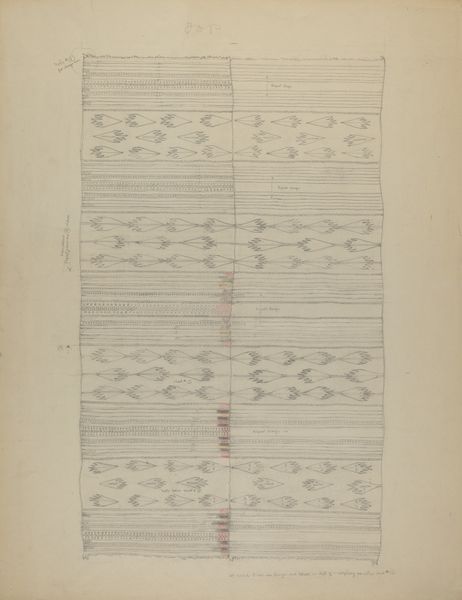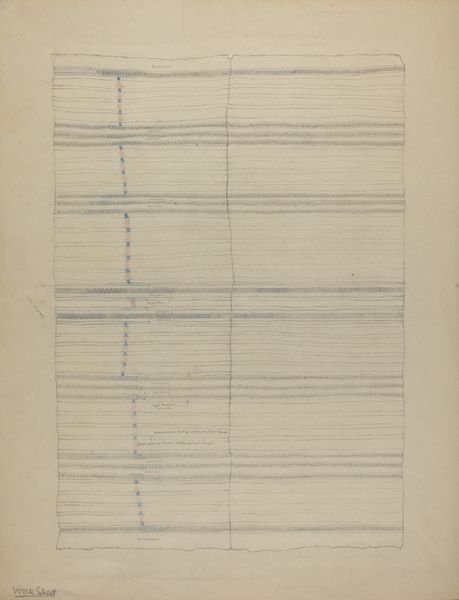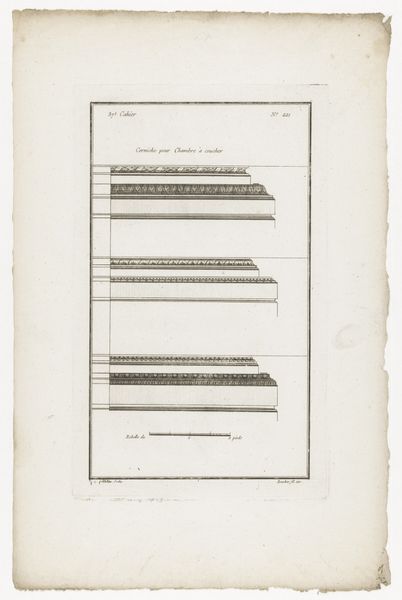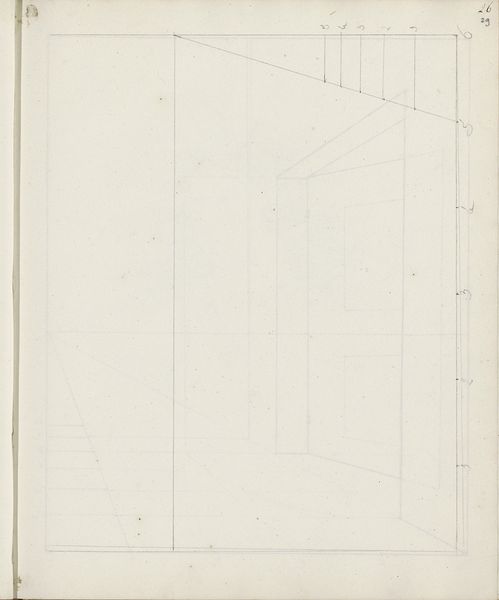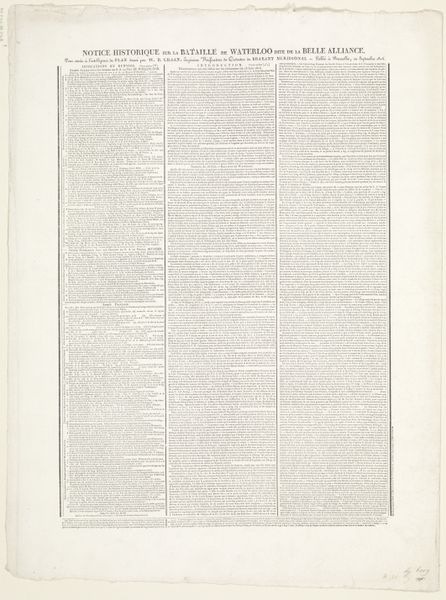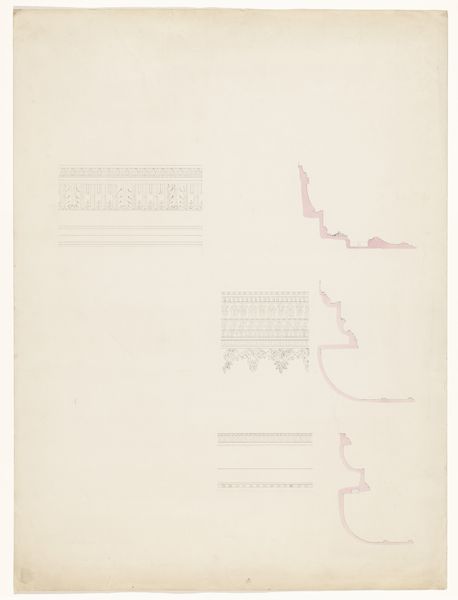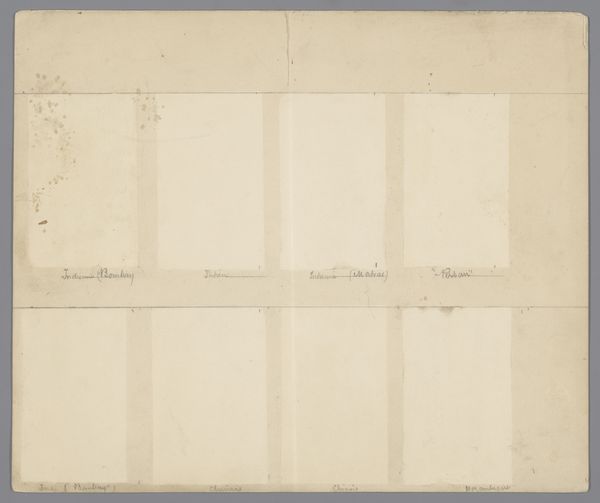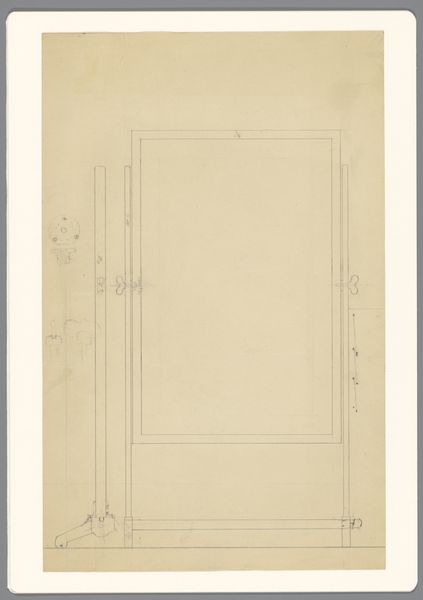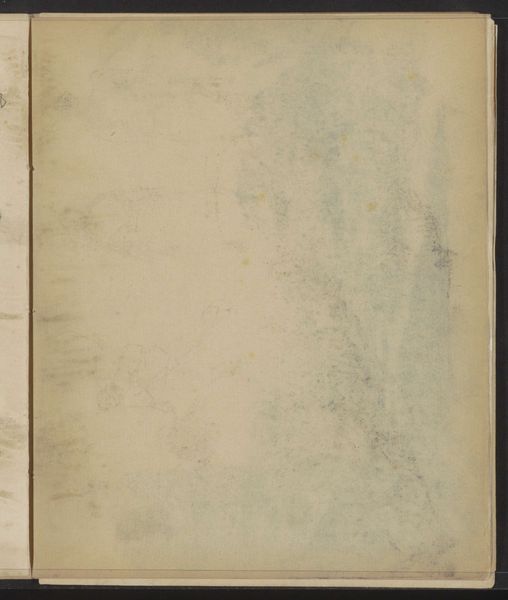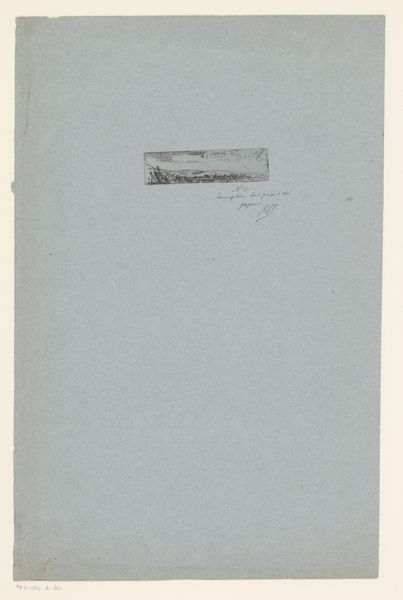
drawing, textile, paper, pencil
#
drawing
#
textile
#
paper
#
geometric
#
pencil
#
geometric-abstraction
#
abstraction
Dimensions: overall: 66.1 x 51 cm (26 x 20 1/16 in.)
Copyright: National Gallery of Art: CC0 1.0
Editor: This is a drawing on paper, a textile design from sometime between 1935 and 1942. It features a pattern of horizontal lines and geometric shapes, rendered simply in pencil. It’s quite delicate and the composition feels almost like a musical score to me. What do you see in this piece? Curator: The allure of this work resides primarily in its structure. Observe how the artist employs a rigorous system of horizontal lines and alternating bands. The pencil strokes, though delicate, adhere to a precise rhythm, a cadence if you will, established by the interplay between dense and sparse applications. What do you notice about the variations within these bands? Editor: I see some are solid, some are dashed, and others are composed of tiny squares or rectangles. The density and texture seem quite varied across the whole image. It looks meticulous. Curator: Precisely. These subtle variations are key. They disrupt the potential monotony of the overall design and introduce a level of visual complexity that invites closer inspection. The medium itself – pencil on paper – contributes to this effect, as the graphite allows for gradations in tone that enhance the work’s textural qualities. Consider, also, the lines. What semiotic reading might we give to their repetition, their linearity? Editor: Perhaps they suggest order and repetition, typical elements of design meant for mechanical production in weaving? Are you saying that the value resides more in the pattern than in a specific cultural relevance of a traditional woven motif? Curator: Precisely. The historical or functional aspects are secondary here. Our engagement lies primarily in appreciating how the artist has masterfully orchestrated these formal elements – line, shape, texture, and composition – to create a visually compelling abstract design. Editor: That makes sense. It’s easy to get lost in thinking about the context. Thinking about it in terms of just its basic structural qualities gives me a new appreciation. Curator: Indeed. Formal analysis provides a powerful lens for understanding and appreciating art across diverse historical and cultural contexts.
Comments
No comments
Be the first to comment and join the conversation on the ultimate creative platform.
